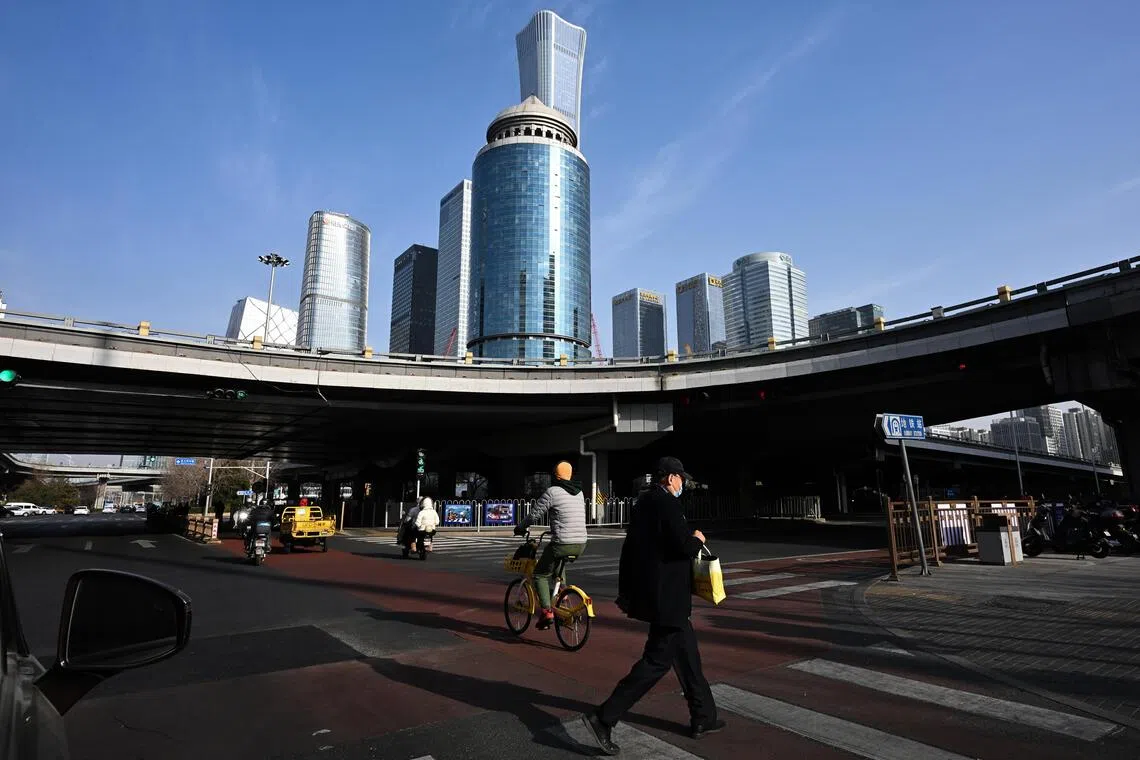China consumer spending falls as pressure on economy builds
Sign up now: Get ST's newsletters delivered to your inbox

The Chinese Commerce Ministry vows to “fight to the end” in its trade war with the US, if necessary.
ST PHOTO: LIM YAOHUI
Follow topic:
BEIJING – China’s consumer prices continued to fall in September, with official data highlighting the challenges leaders face in trying to kick-start domestic spending in the world’s second-largest economy while fighting a trade war with the US.
Beijing has spent recent years grappling with a range of issues that have weighed on growth and consumer activity, including a persistent slump in the country’s vast property market and high youth unemployment.
That has been compounded by a renewed stand-off with Washington since Mr Donald Trump returned as US presiden
The uncertainty this has fanned has made the country’s army of shoppers tighten their wallets.
Data released on Oct 15 showed that the country’s consumer price index – a key measure of inflation – dropped 0.3 per cent year on year in September.
The reading from the National Bureau of Statistics (NBS) was a slight improvement on August but worse than the 0.2 per cent fall forecast in a Bloomberg survey. It also came a day after the International Monetary Fund’s (IMF) latest World Economic Outlook report noted a “weakness in domestic demand” in China, echoing a broader Asian outlook dimmed by the US trade war.
The IMF added that a “rebalancing” of the Chinese economy through fiscal measures targeting social spending and property would help battle deflationary pressure.
While deflation may be appreciated by consumers, it poses a threat to the broader economy as households tend to postpone purchases in the hope of even lower prices.
China’s inflation stabilisation is “fragile and volatile”, said Mr Xu Tianzeng from the Economist Intelligence Unit in response to Oct 15’s data. “The housing market has not yet recovered and the labour market remains weak,” he added.
And Mr Zhang Zhiwei, president and chief economist at Pinpoint Asset Management, wrote in a note: “The trade tension returned and growth outlook uncertainty heightened, which is negative for demand recovery.”
The NBS figures also showed that the producer price index – which measures the cost of goods before they enter wholesale or distribution – fell 2.3 per cent in September, in line with the Bloomberg forecast, and was an improvement from August.
While tensions between Washington and Beijing have eased from their peak, a truce struck by the leaders earlier in 2025 remains shaky. After months of relative calm, Mr Trump warned on Oct 10 that he would roll out an additional 100 per cent tariff on Chinese goods from Nov 1. That came after Beijing imposed fresh controls on the export of rare earth technologies
China’s Commerce Ministry vowed on Oct 14 to “fight to the end” in its trade war with Washington, if necessary.
The latest salvoes came as trade figures from Beijing on Oct 13 provided some hope for the economy, with shipments to the US – the world’s largest consumer market – rising 8.6 per cent on month in September.
Top leaders from the ruling Communist Party will convene in Beijing next week for a closely watched gathering to discuss China’s plan for the next five years, including economic and social development goals.
Analysts agree that more demand-side support from policymakers would be needed to prop up the economy.
Until then, there will be “little prospect of a meaningful improvement in China’s deflationary environment in the near term”, wrote Ms Huang Zichun, China economist at Capital Economics, in a note. AFP

